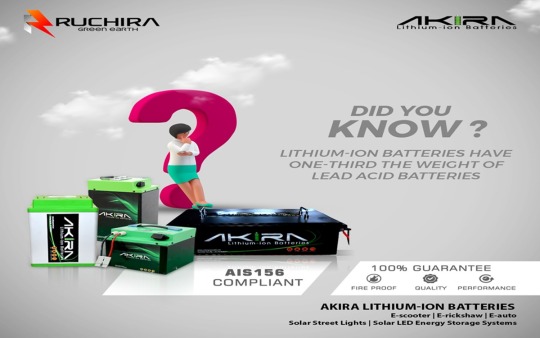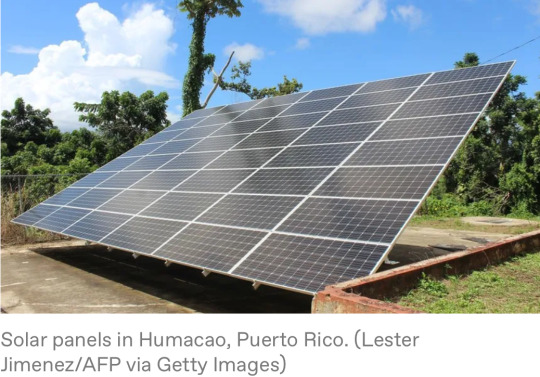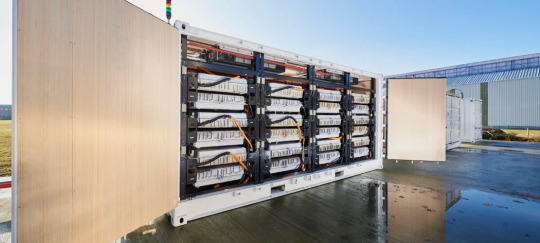#Electric Vehicles battery
Explore tagged Tumblr posts
Text
Lithium Ion Batteries for Electric Vehicles: Challenges and Opportunities
Lithium Ion Batteries for Electric Vehicles: Challenges and Opportunities India is heading towards a revolution in the automotive industry, where electric vehicles (EVs) are quickly gaining popularity very soon to take over as the major mode of transportation across the country. Two wheelers and three wheelers which are the primary vehicles in the country are gradually shifting towards electric modes of energy.

#Lithium Ion Batteries#Electric Vehicles battery#EV Battery Manufacturer#energy#Two wheelers battery#three wheelers battery
0 notes
Text
A well written explanation involving Lithium Ion Batteries. 👇
Understanding Thermal Runaway in Lithium Ion Battery Fires. Thermal Runaway Explained:
Thermal runaway is a chain reaction within a lithium-ion battery that can lead to catastrophic failure, resulting in fires or explosions. Here’s a step-by-step breakdown of what happens during thermal runaway:
1. Initial Trigger: Thermal runaway can be initiated by several factors, such as physical damage (e.g., puncturing or crushing), overcharging, manufacturing defects, or exposure to extreme heat.
2. Internal Heating: Once triggered, a part of the battery starts to overheat. This can be due to an internal short circuit or a chemical reaction within the battery.
3. Chain Reaction: The heat generated from the initial trigger increases the temperature inside the battery. This heat can cause other parts of the battery to react, generating even more heat.
4. Rapid Temperature Rise: As the temperature rises, the electrolyte inside the battery—a flammable liquid—starts to vaporize and decompose, producing gases. This further increases the internal pressure and temperature.
5. Gas Release and Ignition: The increasing pressure can cause the battery casing to rupture, releasing flammable gases. These gases can then ignite, leading to a fire or explosion.
6. Propagation: If the battery is part of a larger battery pack, the heat and flames can spread to adjacent cells, causing them to undergo thermal runaway as well. This can result in a large, intense fire that is difficult to control.
Key Points: - Difficult to Extinguish: Thermal runaway fires require massive amounts of water to cool the batteries and stop the chain reaction. Traditional fire extinguishers are often ineffective.
- Toxic Gases: Burning lithium-ion batteries release toxic gases such as hydrogen fluoride, which can be harmful if inhaled.
- Reignition Risk: Even after the fire appears to be extinguished, there is a risk of reignition. The battery cells can remain hot and unstable for hours or even days.
Safety Measures:
- Distance: Establishing safety distances to keep people away from the danger zone.
- Continuous Monitoring: Using thermal imaging to monitor for any signs of reignition.
- Specialized Response: Firefighters need to use specialized techniques and equipment to handle lithium-ion battery fires safely.
Understanding thermal runaway helps in appreciating the complexity and danger of lithium-ion battery fires, highlighting the importance of safety precautions and effective response strategies. 🤔
#pay attention#educate yourselves#educate yourself#knowledge is power#reeducate yourself#reeducate yourselves#think about it#think for yourselves#think for yourself#do your homework#do some research#do your own research#ask yourself questions#question everything#lithium ion batteries#fires#thermal runaway#news#battery fires#electric vehicles#government corruption
61 notes
·
View notes
Text
(🚗 ÷🔋) + 🌊 = 🔥🔥🔥
source
#electric vehicles#electric cars#car fires#tesla#psa#battery fires#hurricane helene#spontaneous combustion#cyber truck#(i know exactly where that house is)
35 notes
·
View notes
Text
Dandelion News - October 15-21
Like these weekly compilations? Tip me at $kaybarr1735 or check out my Dandelion Doodles on Patreon!
1. EV owners volunteer to drive voters to the polls in 11 states (and you can too)

“ChargeTheVote.org is a nonpartisan voter education and engagement initiative to enhance voter turnout in the 2024 election by providing zero-emission transportation in electric vehicles (EVs) to local polling locations. ChargeTheVote will also host a webinar for those who are interested in participating this coming Tuesday, October 22 at 7pm Eastern time.”
2. Kenya moves 50 elephants to a larger park, says it’s a sign poaching is low

“The elephant population in the […”Mwea National Reserve”…] has flourished from its capacity of 50 to a whopping 156 […] requiring the relocation of about 100 of [them…. The] overpopulation in Mwea highlighted the success of conservation efforts over the last three decades.”
3. Australian start-up secures $9m for mine-based gravity energy storage technology

““We expect to configure the gravitational storage technology [which the company “hopes to deploy in disused mines”] for mid-duration storage applications of 4 to 24 hours, deliver 80% energy efficiency and to enable reuse of critical grid infrastructure.“”
4. Africa’s little-known golden cat gets a conservation boost, with community help

“[H]unting households were given a pregnant sow [… so that they] had access to meat without needing to trap it in the wild. […] To address income needs, Embaka started […] a savings and loan co-op[… and an] incentive for the locals to give up hunting in exchange for regular dental care.”
5. 4.8M borrowers — including 1M in public service — have had student debt forgiven

“That brings the total amount of student debt relief under the administration to $175 billion[….] The Education Department said that before Biden's presidency, only 7,000 public servants had ever received student debt relief through the Public Service Loan Forgiveness program. […] "That’s an increase of more than 14,000% in less than four years.””
6. Puerto Rico closes $861M DOE loan guarantee for huge solar, battery project

“The solar plants combined will have 200 megawatts of solar capacity — enough to power 43,000 homes — while the battery systems are expected to provide up to 285 megawatts of storage capacity. [… O]ver the next 10 years, more than 90 percent of solar capacity in Puerto Rico will come from distributed resources like rooftop solar.”
7. Tim Walz Defends Queer And Trans Youth At Length In Interview With Glennon Doyle
“Walz discussed positive legislative actions, such as codifying hate crime laws and increasing education[.… “We] need to appoint judges who uphold the right to marriage, uphold the right to be who you are [… and] to get the medical care that you need.””
8. Next-Generation Geothermal Development Important Tool for Clean Energy Economy

““The newest forms of geothermal energy hold the promise of generating electricity 24 hours a day using an endlessly renewable, pollution-free resource[… that] causes less disturbance to public lands and wildlife habitat […] than many other forms of energy development[….]”
9. Sarah McBride hopes bid to be first transgender congresswoman encourages ’empathy’ for trans people

““Folks know I am personally invested in equality as an LGBTQ person. But my priorities are going to be affordable child care, paid family and medical leave, housing, health care, reproductive freedom. […] We know throughout history that the power of proximity has opened even the most-closed of hearts and minds.”“
10. At Mexico’s school for jaguars, big cats learn skills to return to the wild

“[A team of scientists] have successfully released two jaguars, and are currently working to reintroduce two other jaguars and three pumas (Puma concolor). [… “Wildlife simulation”] “keeps the jaguars active and reduces the impact of captivity and a sedentary lifestyle[….]””
October 8-14 news here | (all credit for images and written material can be found at the source linked; I don’t claim credit for anything but curating.)
#good news#hopepunk#electric vehicles#voting#elephant#kenya#conservation#australia#battery#energy storage#africa#cats#hunting#tw animal death#student loans#student debt#debt relief#education#puerto rico#solar#solar panels#solar energy#solar power#tim walz#lgbt#lgbtq#geothermal#renewableenergy#trans rights#transgender
28 notes
·
View notes
Text

[In February, 2023], a small warehouse in the English city of Nottingham received the crucial final components for a project that leverages the power of used EV batteries to create a new kind of circular economy.
Inside, city authorities have installed 40 two-way electric vehicle chargers that are connected to solar panels and a pioneering battery energy storage system, which will together power a number of on-site facilities and a fleet of 200 municipal vehicles while simultaneously helping to decarbonize the UK’s electrical grid.
Each day Nottingham will send a combination of solar-generated energy — and whatever is left in the vehicles after the day’s use — from its storage devices into the national grid. The so-called “vehicle to grid” chargers deliver this energy just when it’s needed most, during peak evening demand, when people are home cooking, using hot water or watching TV. Later, the same chargers pull energy from the grid to recharge the vehicles in the wee hours of the night, when folks are sleeping and electricity is cheaper and plentiful.
“We are trying to create a virtual power station,” says Steve Cornes, Nottingham City Council’s Technical Lead. “The solar power and battery storage will help us operate independently and outside of peak times, making our system more resilient and reducing stress on the national grid. We could even make a profit.” ...
After around a decade, an EV battery no longer provides sufficient performance for car journeys. However, they still can retain up to 80 percent of their original capacity, and with this great remaining power comes great reusability.
“As the batteries degrade, they lose their usefulness for vehicles,” says Matthew Lumsden, chairman of Connected Energy. “But batteries can be used for so many other things, and to not do so results in waste and more mining of natural resources.”
The E-STOR hubs come in the form of 20-foot modular containers, each one packed with 24 repurposed EV batteries from Renault cars. Each hub can provide up to 300kW of power, enough to provide energy to dozens of homes. One study by Lancaster University, commissioned by Connected Energy, calculated that a second life battery system saved 450 tons of CO2 per MWh over its lifetime...
Battery repurposing and recycling is set to play a massive role over the coming years as the automobile industry attempts to decarbonize and the world more broadly attempts to fight waste. The production of EVs, which use lithium-ion batteries, is accelerating. Tesla, for example, is aiming to sell 20 million EVs per year by 2030 — more than 13 times the current level. In turn, 12 million tons of EV batteries could become available for reuse by 2030, according to one estimate.
“Over the next decade we are going to see this gigantic wave,” says Jessica Dunn, a senior analyst at the Union of Concerned Scientists. “Companies are recognizing this is a necessary industry. They need to ramp up infrastructure for recycling and reuse.”
-via Reasons to Be Cheerful, March 13, 2023
#ev#ev charger#electric vehicle#electric cars#batteries#battery recycling#lithium ion battery#auto industry#sustainability#circular economy#recycling#reuse#uk#nottingham#england#good news#hope
217 notes
·
View notes
Text
Cobalt mining is the slave farm perfected. It is a system of absolute exploitation for absolute profit.
– Siddharth Kara
29 notes
·
View notes
Text
PSA ABOUT ELECTRIC VEHICLES
IF YOU OWN AN ELECTRIC VEHICLE AND ARE IN THE PATH OF AN ONCOMING HURRICANE AND CANNOT EVACUATE
DO NOT PARK YOUR CAR IN YOUR HOUSE
heavy hurricanes like helene and milton will bring floods of saltwater with them. saltwater is corrosive towards the lithium ion batteries found in ALL ELECTRIC VEHICLES and can cause the batteries to short-circuit, fail, or even explode. lithium ion fires take THOUSANDS more gallons of water to put out than normal electrical fires. they can and will burn houses down even during hurricanes.
PARK YOUR ELECTRIC VEHICLES ON THE STREET.
#psa#safety#hurricane helene#hurricane milton#florida#georgia#hurricane relief#electric vehicles#lithium battery#please rb#electric cars#please spread this very few people know how dangerous saltwater is to EVs#people have lost their homes in north carolina because they parked their teslas in their garage
16 notes
·
View notes
Text
It's so frustrating to me that people see electric automobiles as a green technology. They are anything but.
#Sure lets encourage people to buy more single-person vehicles#with extra heavy bases#requiring extra concrete on the existing roads to deal with the added load#with extremely flammable and toxic batteries (that you really shouldn't be parking in any kind of underground parking)#demanding double or triple the electric power delivery to your home than you needed before you bought the vehicle#requiring your electric utility to tear up your roads to install bigger cables#sure#that's going to be *good* for the environment
29 notes
·
View notes
Text
youtube
A lot has changed in the world of electric vehicles over the past five years. When we analyzed EV battery health (and published the original results in this blog post) in 2019, we found EV batteries degraded, on average, at 2.3% per year. Of course, some EVs performed better and others less well, but the average was surprisingly good. In 2024, we performed a new analysis and the results indicate that EV batteries have improved significantly, degrading at 1.8% per year on average. So how long do EV batteries last? Geotab research shows that EV batteries could last 20 years or more if they degrade at an average rate of 1.8% per year, as we have observed.
source
Whoa, that's really good news!
#youtube#youtube shorts#UFD Tech#geotab#electric vehicles#cars#batteries#good news#solar punk#electric dreams#electric cars
6 notes
·
View notes
Text
On Electric Cars (and their shortcomings)
#electric cars#electric vehicles#ev car brands#ev car goes up in flames & sets house on fire after driver put toaster under car to ‘warm up batteries’ in cold weather#ev cars#cars#car#vehicle#vehicle electronics#vehicles#pollution#pollutants#polluted water#polluted air#ecology#econotego#class war#eat the rich#eat the fucking rich#ausgov#politas#auspol#tasgov#taspol#australia#fuck neoliberals#neoliberal capitalism#anthony albanese#albanese government#video
10 notes
·
View notes
Text
youtube
The EV Detroit is Dying to Benchmark - BYD Seagull
Automakers are dying to know how the hell BYD can sell the Seagull for only $11,500. Terry Woychowski, the President of Caresoft, points out a few of the cost saving tips & John McElroy takes it for a quick test drive.
P.S. There are a butt-load of people just waiting for an electric car like this in Europe!!! Folks that don't need or want to pay for all the ridiculous bells and whistles of the badly overpriced and huge "premium" EV's!!
6 notes
·
View notes
Text
Top 5 Automotive Companies and How Metalman Auto Ltd. Supports Them
The automotive industry is dominated by several key players that lead the market in terms of innovation, production, and market share. The top five automotive companies globally are typically considered to be Toyota, Volkswagen Group, Daimler AG (Mercedes-Benz), Ford Motor Company, and General Motors (GM).

How Metalman Auto Ltd. Supports These Automotive Giants
As a leading supplier of high-quality automotive components, Metalman Auto Ltd. is well-positioned to support these top automotive companies. Our expertise in metal fabrication and assembly allows us to provide critical components that meet the specific needs of these manufacturers.
Our Value Proposition:
High-Precision Components: We provide parts that are essential for the safety and performance of vehicles, adhering to the exact specifications required by these top manufacturers.
Collaborative Approach: We work closely with OEMs to understand their needs and provide innovative solutions that enhance vehicle performance and safety.
Sustainable Manufacturing: Our commitment to sustainable practices ensures we contribute positively to the automotive industry’s environmental goals.
By partnering with Metalman Auto, these top automotive companies can enhance their supply chain efficiency and maintain their competitive edge in the global market.
#EV components supplier#Electric car parts manufacturer#Battery components supplier for EVs#Electric vehicle drivetrain parts supplier#EV charging components manufacturer#Electric motor parts supplier#EV battery management system supplier#Electric scooter parts manufacturer#general motors#vintage automobiles#chevrolet#Volkswagen Group#automotive industry#automotive#automotive components#metal fabrication#oems#oemparts#oem manufacturing#oem#metal parts supplier#India automotive components manufacturer#Automobile parts production in India#OEM parts manufacturing in India#Indian automotive parts supplier#Vehicle parts manufacturing industry in India#Made in India automotive components#Indian car parts production#India-based automotive parts manufacturer"
2 notes
·
View notes
Text
Green energy for sustainability purposes? 🤔
#pay attention#educate yourselves#educate yourself#knowledge is power#reeducate yourself#reeducate yourselves#think for yourself#think for yourselves#think about it#question everything#ask yourself questions#lithium battery#electric vehicles#do your homework#you decide
380 notes
·
View notes
Text
An alternative to Diesel: the Baureihe 563

More and more of these trains have appeared in the Offenburg area recently. Technically, I could be talking about both of the trains above because I'd never seen a Baureihe 218 locomotive (right) before, though over 400 were built in the 70s, but I am talking about the train on the left: the Baureihe 563.

5 is an unusual first digit for a German train type. Locomotives start with a 1 or a 2, for electric and Diesel power respectively, while passenger-carrying multiple units start with a 4 or a 6, again for electric and Diesel power respectively. Evidently, as seen above, these trains can run on non-electrified lines, but they are not Diesel multiple units - they are battery-electric multiple units.

Part of the Siemens Mireo family, the Mireo Plus B can run on electric power either from the overhead cable, or from the onboard batteries. The manufacturer states that the train can run between 80 and 120 km on battery power before needing a recharge from overhead cable, typically at a terminal station. This makes this train ideal for relatively short runs, such as those seen around Offenburg, the central station of the Ortenau area. As such, they are becoming more common, running local services for regional operator SWEG, indifferently on non-electrified lines like the one to Oberkirch, or electrified lines such as the picturesque Schwarzwaldbahn.

I know that Japan and the UK (link to Jago Hazzard's review of the GWR Class 230 and a quick overview of the BEMU topic) have also recently (re)introduced BEMUs. France hasn't really got on-board with this yet, as far as I know. Instead, they have built lots of bi-mode trains (mentioned at the end of the post), which have electric motors which can be powered by overhead cables or by an on-board Diesel engine.
#Germany#Deutschland#Ortenau#Offenburg#Oberkirch#Hornberg#Schwarzwaldbahn#SWEG#Siemens Mireo Plus B#BEMU#battery-electric#train#Baureihe 563#when I said the 'first digit' indicates the vehicle type I should really say 'third digit from the end'#for example the Baureihe 1440 and 1462 are EMUs as indicated by the 4#2024-07#2024-08
3 notes
·
View notes
Text
How does an engine contribute to a car's powertrain?
The powertrain in a vehicle is the system responsible for generating power and delivering it to the wheels to propel the vehicle forward. The operation of a powertrain can vary depending on whether the vehicle is powered by an internal combustion engine (ICE) or an electric motor (in the case of electric vehicles). Here's a general overview of how a powertrain works in both types of vehicles:
Internal Combustion Engine (ICE) Vehicle - Combustion Process: In an ICE vehicle, the powertrain starts with the combustion process in the engine. Fuel (gasoline or diesel) mixes with air in the combustion chamber and is ignited by spark plugs (in gasoline engines) or compression (in diesel engines).
Power Generation: The combustion process generates energy in the form of mechanical power, causing pistons to move up and down within the cylinders of the engine. This motion drives the crankshaft, converting linear motion into rotational motion.
Transmission: The rotational motion from the crankshaft is transmitted to the transmission, which consists of gears that allow the driver to select different ratios (speeds). This enables the engine to operate efficiently across a range of vehicle speeds.
Drivetrain: The transmission sends power to the drivetrain components, including the driveshaft, differential, and axles, which transfer power to the wheels. The differential allows the wheels to rotate at different speeds, enabling smooth turns.
Wheel Movement: The power transmitted through the drivetrain causes the wheels to rotate, propelling the vehicle forward or backward depending on the gear selection and throttle input from the driver.
Electric Vehicle (EV) -
Battery Pack: The primary source of power for the EV, storing electricity in chemical form.Powers the electric motor and provides electricity for all electronic devices within the EV.
Battery Management System (BMS): Monitors battery cell conditions, including voltage, current, temperature, and state of charge (SoC).It protects the battery against overcharging, deep discharging, and overheating and helps balance the charge across cells. Ensures optimal performance and longevity of the battery by regulating its environment.
Inverter: Converts DC from the battery pack into AC to drive the electric motor.Adjusts the frequency and amplitude of the AC output to control the motor’s speed and torque. Critical for translating electrical energy into mechanical energy efficiently.
Onboard Charger: Facilitates the conversion of external AC (from the grid) to DC to charge the battery pack. Integrated within the vehicle, allowing for charging from standard electrical outlets or specialized EV charging stations. Manages charging rate based on battery status to ensure safe and efficient charging.
DC-DC Converter: Steps down the high-voltage DC from the battery pack to the lower-voltage DC needed for the vehicle's auxiliary systems, such as lighting, infotainment, and climate control. Ensures compatibility between the high-voltage battery system and low-voltage electronic components.
Electric Motor: Converts electrical energy into mechanical energy to propel the vehicle. It can be of various types, such as induction motors or permanent magnet synchronous motors, each offering different efficiencies and characteristics. Typically provides instant torque, resulting in rapid acceleration.
Vehicle Control Unit (VCU): The central computer or electronic control unit (ECU) that governs the EV's systems. Processes inputs from the vehicle’s sensors and driver inputs to manage power delivery, regenerative braking, and vehicle dynamics. Ensures optimal performance, energy efficiency, and safety.
Power Distribution Unit (PDU): Manages electrical power distribution from the battery to the EV’s various systems. Ensures that components such as the electric motor, onboard charger, and DC-DC converter receive the power they need to operate efficiently. Protects the vehicle's electrical systems by regulating current flow and preventing electrical faults.
In both ICE vehicles and EVs, the powertrain's components work together to convert energy into motion, enabling the vehicle to move efficiently and effectively. However, the specific technologies and processes involved differ significantly between the two propulsion systems.
#electric powertrain technology#conventional powertrain#Electric vehicle components#revolo hybrid car kit#ev powertrain development services#software (SW) platforms for all Electric vehicles components#Battery Management Systems#Inverter#Smart Charger#VCU solutions
3 notes
·
View notes
Text
What Percentage of Cars Sold in 2023 Were Electric?
The automotive industry has been rapidly shifting towards electric vehicles (EVs), driven by increasing environmental concerns, technological advancements, and government incentives. The year 2023 marked a significant milestone in this transition. This transition has raised the question: What Percentage of Cars Sold in 2023 Were Electric? Let’s dive into the data to understand the impact and…

View On WordPress
#automotive industry#automotive trends#battery production#battery technology#car manufacturing#car market trends#car sales 2023#charging infrastructure#charging networks#China EV market#Clean Energy#cobalt#consumer acceptance#electric cars#electric mobility#electric vehicles#environmental awareness#Environmental Impact#Europe EV market#EV adoption#EV incentives#EV maintenance#EV technology#EVs#Ford#future of cars#General Motors#global sales#Government Incentives#green alternatives
2 notes
·
View notes